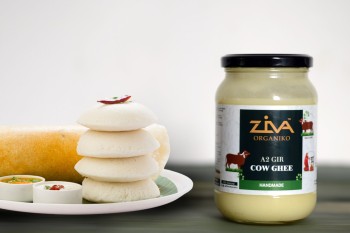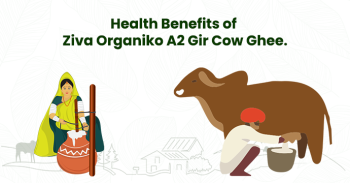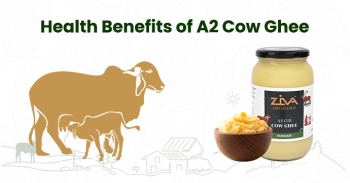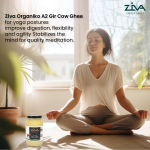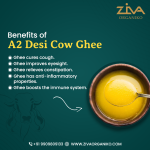A2 Cow Ghee vs. Regular Ghee: How Do They Differ?
Ghee, a clarified butter staple in Indian cuisine, holds a special place in
many households. But with the rise of A2 milk products, a question arises: is
A2 ghee different from regular ghee? The answer is yes, and the key lies in the
source of the milk and the production process.
Milk Matters: A1 vs. A2
The difference between A2 and regular ghee boils down to the type of milk
used. Milk contains beta-casein, a protein, but there are two main types: A1
and A2. A1 beta-casein is found in the milk of most cows bred in Europe and
America. A2 beta-casein, on the other hand, is predominant in the milk of desi
(indigenous) cows found in India.
Some studies suggest that A1 beta-casein may be harder to digest for some
people, leading to digestive discomfort. A2 milk, containing A2 beta-casein, is
believed to be easier to digest.
Cows and Production: Traditional vs. Modern
A2 ghee is typically made from the milk of Gir cows, a breed native to
India known for its high-quality milk. These cows are often raised in smaller
farms with a focus on organic practices.
Regular ghee, on the other hand, can be produced from the milk of various
breeds, including those containing A1 beta-casein. Production methods can vary,
with some utilizing large-scale industrial processes.
The Bilona Method: A Slow and Steady Approach
A2 ghee is often made using the traditional bilona method. This slow and
meticulous process involves:
1. Boiling A2 milk: This removes impurities and
unwanted flavours.
2. Curdling with yogurt starter: The milk
is fermented into curd.
3. Churning with a wooden bilona: The curd
is churned to separate butterfat from the whey.
4. Simmering the butter: The butter is gently heated
until the milk solids and water evaporate, leaving behind pure ghee.
Regular ghee production can be faster, with butter directly clarified from
cream without the fermentation step.
Flavour, Texture, and Nutrition
A2 ghee is often touted for its richer, nuttier flavor and a slightly
grainy texture. Regular ghee can have a milder flavor profile.
A2 ghee may also contain higher levels of vitamins A and E due to the
traditional production process that preserves these nutrients.
The Bottom Line
While both A2 and regular ghee are clarified butter with a high smoke
point, there are distinct differences. A2 ghee, made with A2 milk from desi
cows using the bilona method, is believed to be easier to digest and may offer
a richer flavour and nutrient profile.
Ultimately, the choice between A2 and regular ghee depends on your
individual preferences, budget, and access to these products.


